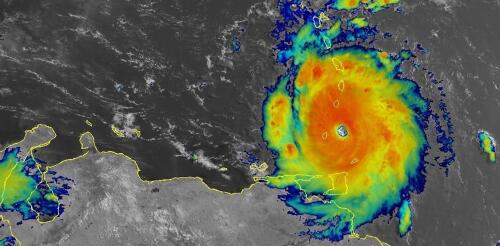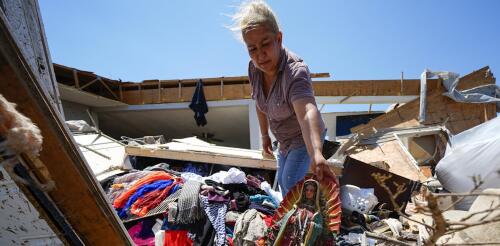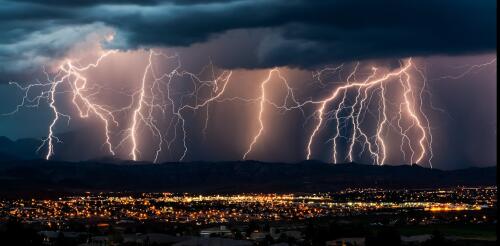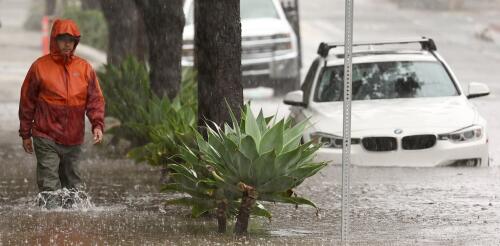Extreme storms
Storm-chasing for science can be exciting and stressful – we know, because we do it. It has also been essential for developing today’s understanding of how tornadoes form and how they behave. In 1996, the movie “Twister” with Helen Hunt brought storm-chasing scientists into the public imagination and inspired a generation of atmospheric scientists. With the new “Twisters” movie hitting theaters, we’ve been getting questions about storm-chasing – or storm intercepts, as we call them. Here are some answers about what scientists who do this kind of fieldwork are really up to when they race off after storms. Scientists with the National Severe Storms Lab ‘intercepted’ this tornado to collect data using mobile radar and other instruments on May 24, 2024. National Severe Storms Lab What does a day of storm-chasing really look like? The morning...
Hurricane Beryl was the latest Atlantic storm to rapidly intensify, growing quickly from a tropical storm into the strongest June hurricane on record in the Atlantic. It hit the Grenadine Islands with 150 mph winds and a destructive storm surge on July 1, 2024, then continued to intensify into the basin’s earliest Category 5 storm on record. Beryl was still a powerful Category 4 hurricane on July 3 when its eyewall brushed the coast of Jamaica and headed toward the Cayman Islands. A large part of Mexico’s Yucatan Peninsula was under a hurricane warning. The damage Beryl caused, particularly on Carriacou and Petite Martinique, was extensive, Grenada Prime Minister Dickon Mitchell told a news briefing. “In half an hour, Carriacou was flattened.” Beryl’s strength and rapid intensification were unusual for a storm so early in the season. This year, that is especially alarming as forecasters expect an exceptionally active Atlantic hurricane season....
Spring 2024 was unnerving for people across large parts of the U.S. as tornado warnings and sirens sent them scrambling for safety. More than 1,100 tornadoes were reported through May − a preliminary number but nearly twice the 30-year average at that point and behind only 2011, when deadly tornado outbreaks tore across the southeastern U.S. The U.S. experienced several multistate outbreaks in 2024. Tornadoes damaged homes from Texas to Minnesota and east to West Virginia and Georgia. They caused widespread destruction in several towns, including Greenfield, Iowa; Westmoreland, Kansas; and Bartlesville, Oklahoma. Barnsdall, Oklahoma, was hit twice in two months. In May, at least one tornado occurred somewhere in the country almost every day. Greenfield, Iowa, after a powerful EF4 tornado cut through the city on May 21, 2024, amid a deadly tornado outbreak. What causes some years to have so many tornadoes? I’m a meteorologist w...
It’s been a warm day, maybe even a little humid, and the tall clouds in the distance remind you of cauliflower. You hear a sharp crack, like the sound of a batter hitting a home run, or a low rumble reminiscent of a truck driving down the highway. A distant thunderstorm, alive with lightning, is making itself known. Lightning flashes in thunderstorms at least 60 times per second somewhere around the planet, sometimes even near the North Pole. Each giant spark of electricity travels through the atmosphere at 200,000 miles per hour. It is hotter than the surface of the sun and delivers thousands of times more electricity than the power outlet that charges your smartphone. That’s why lightning is so dangerous. Lightning kills or injures about 250,000 people around the world every year, most frequently in developing countries, where many people work outside without lightning-safe shelters nearby. In the United States, an average of 28 people were killed by lightning ev...
Wild weather has been roiling North America for the past few months, thanks in part to a strong El Niño that sent temperatures surging in 2023. The climate phenomenon fed atmospheric rivers drenching the West Coast and contributed to summer’s extreme heat in the South and Midwest and fall’s wet storms across the East. That strong El Niño is now starting to weaken and will likely be gone by late spring 2024. So, what does that mean for the months ahead – and for the 2024 hurricane season? What is El Niño? Let’s start with a quick look at what an El Niño is. El Niño and its opposite, La Niña, are climate patterns that influence weather around the world. El Niño tends to raise global temperatures, as we saw in 2023, while La Niña events tend to be slightly cooler. The two result in global temperatures fluctuating above and below the warming trend set by climate change. El Niño starts as warm water builds up a...




